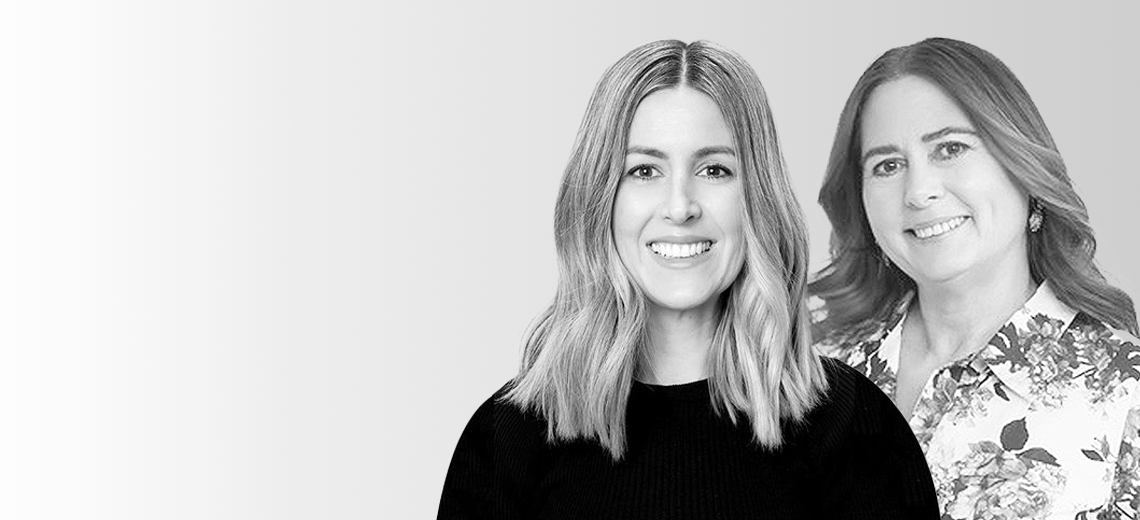This is an episode of the Glossy Fashion Podcast, which features candid conversations about how today’s trends are shaping the future of the fashion industry. More from the series →
Despite a booming e-commerce market, Scotland-based e-tailer Atterley is managing to differentiate. That’s thanks to a powerhouse team that includes co-CEO Kelly Byrne, formerly of Nasty Gal, and chief trends officer Alexandra Shulman, previously editor-in-chief of British Vogue.
Under Byrne and Shulman’s leadership, Atterley has grown its reach among shoppers who value its business model of “a marketplace supporting boutiques globally [and] a champion in the ethos of independent shopping,” as described by Byrne on the latest episode of the Glossy Podcast.
This year, the company is hyperfocused on growing its U.S. consumer base. Currently, the U.S. is Atterley’s second-largest and fastest-growing market, according to Byrne and Shulman. They’re now focused on building brand awareness while spotlighting the company’s ability to provide consumers with a unique online shopping experience.
“Where Atterley is really strong are in these lower price points but above the high street, and [with] brands that other countries have never heard of. I’m sure that, in the states, a lot of our offerings are exciting new brands that you aren’t going to find anywhere,” Shulman said.
Below are additional highlights from the conversation, which have been lightly edited for clarity.
Building long-lasting partnerships
Byrne: “For [many of these retailers, the big question at the height of the pandemic] was: How do they actually sell the product that they’ve got in their stores? Atterley was a lifeline to be able to do that. During that time, the team behind the scenes developed really strong relationships with a lot of these boutiques globally and encouraged them to think about their own retail in a different way. A lot of them post-pandemic have become much more sophisticated in their own e-commerce offerings.”
A point of differentiation
Shulman: “Atterley is a different kind of thing [than Farfetch]. It’s more village-like, in a way, and it’s more user-friendly. Once you know about Atterley, it’s very appealing. It’s unthreatening and you feel very comfortable using it.”
Byrne: “We do a lot of work around spotlighting the people behind the boutiques. … We have a two-way dialogue [with our partners] every day around what’s working, what trends we’re seeing, what [they’re] seeing, where we can support them more and where we can give new visibility to new brands that they’re bringing on. That education on some of the newer brands that are, perhaps, not so freely available in department stores — where you’d have to sort of scour numerous magazines and websites to find them — is probably one of the biggest selling points of Atterley. We house it all in one place and [we] become … [an] educator on: If you like this brand, here’s a similar one that’s in the same price point.”
The menswear play
Shulman: “Atterley has actually got quite a high proportion of male shoppers, and that’s growing. My own feeling is that it’s a big growth area for the company. Men really like e-commerce, they like the convenience of it. Most men, not from the top fashion end, but most men like to find what they want to wear and buy it again and again. And that’s really easy to do on Atterley. There isn’t interest in trends — that’s not nearly as relevant, in terms of connecting with [our male] audience, as it is for the women.”
Byrne: “What’s probably the biggest marketing channel for men is our CRM email strategy. Men are not really interested in, ‘Here’s a range of dresses.’ They know the brands they like. So we work on a personalized basis with [them]. … With men, they’ve got the staple brands they keep going back to. So, from our point of view, the email personalization piece for menswear is really important.”
The U.S. market opportunity
Byrne: “The focus for us globally, and in the U.S. particularly, is growing the brand awareness and still concentrating on the digital side — that efficient marketing. It’s [also] around driving return on channels that are cost-effective. We want to focus this year on the customer experience in the U.S. It’s our second biggest market, and we want to deliver the best experience for our U.S. customers. We’re talking about a dedicated U.S. shopping site and even things like better logistics options in the market. And if you are going to return [an item], we want to make sure we’ve got all the available carriers that make it really easy for U.S. customers. [Additionally, we’re focusing on] terminology that resonates, language-wise, with U.S. customers. [We’re] making sure we’re well-versed [in the U.S. market] and that every single customer who comes to our site is going to find something they like and be able to transact really easily. We are aiming for high growth in the U.S. It’s all about the customer experience and the brand awareness.”




